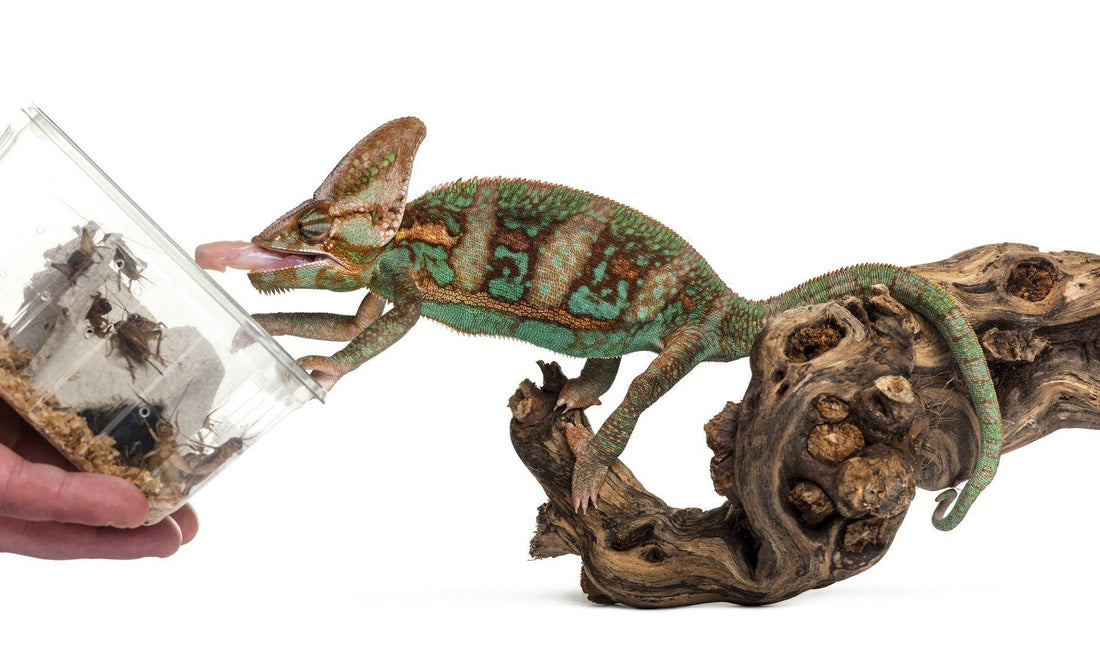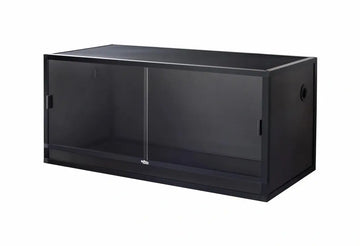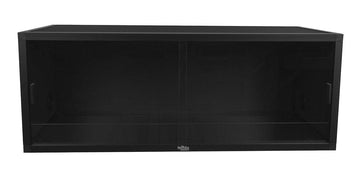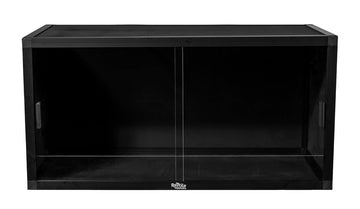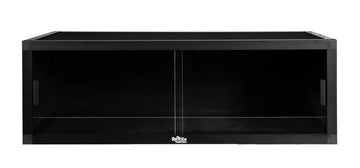Veiled chameleons are a favorite pet for reptile lovers due to their character and unusual appearance; however, they can be difficult for beginners because of their advanced care needs.
As insectivores, veiled chameleons require a diverse range of insects in their diet; it is vital to choose the right insects that will provide the correct nutrients which are essential to your chameleon's well-being. When selecting the right feeders for your pet, you need to take the ratio of protein and calcium contained in each insect, as they both play an essential role in helping your veiled chameleon to live long and healthy lives. As captive animals, it has been found that your veiled chameleon can enjoy vegetables and plants as a small part of their diet, and it can help them to thrive. So we will also cover what greens and vegetables can be safely offered to your chameleon. First, we will cover what insects your veiled chameleon can eat.
What Insects Can Veiled Chameleons Eat?
Staples:
Dubia Roaches — Moisture 71.5%, Protein 21.4%, Fat 3.1%, Ash 1.3%, Fiber 2.6%, Calcium 700mg/kg
Black Soldier Fly Larvae (Nutrigrubs) — Moisture 61.2%, Protein 17.5%, Fat 14%, Ash 3.5%, Fiber 3%, Calcium 9340 mg/kg
Superworms — Moisture 57.9%, Protein 19.7%, Fat 17.7%, Ash 1%, Fiber 2.7%, Calcium 177mg/kg
Crickets — Moisture 77.1%, Protein 15.4%, Fat 3.3%, Ash 1.1%, Fiber 2.2%, Calcium 275mg//kg
Silkworms — Moisture 82.7%, Protein 9.3%, Fat 1.1%, Fiber 1.1%, Calcium 177mg/kg
Treats:
Hornworms (Very high water content) — Moisture 85%, Protein 9%, Fat 3.07%, Ash n/a, Fiber n/a, 464mg/kg
Waxworms (Very high fat content) — Moisture 58.5%, Protein 14.1%, Fat 24.9%, Ash 0.6%, Fiber 3.4%, Calcium 243mg/kg
Feeding Schedule
Juveniles should be fed every day. As they grow into the adult stage, they only need to be fed once every other day. Staple insects can be supplied for every feeding, but treat bugs should only be fed twice per week at most.
Supplementing & Gut-Loading Bugs
Gut loading is an essential aspect of any insectivorous reptile's diet; it is the process of nourishing your feeder insects with foods that will then pass on the nutrients to your pet. Not doing this is missing a valuable opportunity to supplement your pet's diet.
One way to gut-load your feeders is to give them the same vegetables that you would offer to your pet and pass the nutrients from the vegetables in that way. Still, a better approach is to give them a commercial product developed for this purpose as it provides a more balanced range of nutrition. Here are a few recommendations:
Supplementing your feeding insects is necessary to maintain your chameleon's health. You will want to supplement their diet with calcium without D3 and a multivitamin powder. This is our recommended schedule for supplementing a veiled chameleon:
Every feeding: (one) calcium without D3
2x/month: (one) multivitamin
Safe Greens and Vegetables For your Veiled Chameleon
As mentioned, you don't need to offer your pet chameleon plants for them to live, but there are some benefits as plant matter seems to offer roughage in their digestive system and possibly provide additional hydration. If you choose to offer any of this, just keep it to a minimum. We only recommend offering these once a week, at most. See below for a list of safe options for your pet.
Greens
- Arugula
- Bok choy
- Collard greens
- Dandelion greens
- Endive
- Escarole
- Hibiscus
- Mustard greens
- Turnip greens
Vegetables
- Carrots
- Cucumber
- Pumpkins
- Squash (Butternut, Spaghetti, Acorn, Winter)
- Sweet potato
- Sweet red peppers
- Watercress
- Zucchini
Water
Since they drink by licking the droplets from the leaves in their habitat, you can mist the leaves in their enclosure in the morning and at night when lights are off to provide them with droplets to drink, and if you feel that you don't have enough time to do this, then you can buy a "dripper" which has been made for this purpose which will do the job for you. You can also add some ice cubes on the top of the enclosure!

